Swimming Backstroke
It's very easy with backstroke to let your legs drop from the surface of the water, either by arching your back or liftling your head. This obviously increases drag and often happens when a swimmer tips their head back trying to align themselves with the surface. Unfortunately this has the opposite effect, bending the neck arches the back and the legs droop even more.
Another important factor in Back Stroke is that you can't stroke close to the center line of your body, you're stroking out to the side because of your body position in the water. This is a weaker position, especially if the swimmer strokes with a straight arm.
With back stroke the hand enters the water with the little finger down and in a 10 mins to or 10 mins past the hour position. The hand then drives down with a straight arm and the hand turns towards the side of the pool. The shoulders and hips rotate to the stroking side both to maximise your reach and ensure that the arm finishing a stroke can exit the water from the side of the body and closer to the body's center line.
Rotation really is the key to backstroke - without rotation you can't extend your reach and develop a catch as far behind your head as possible. The video on the right explores this more.
Backstroke - Stroke Progression
The sequence to the right shows the main drive phase of the stroke. Note that the hand travels close to the surface of the water in the final three shots, as the rotation of the hips and shoulders unwinds, the arm begins to move downwards again, although the hand is still pushing back against the water..
- When the hand enters the body rotates to extend the reach and enable the catch ..
- ... then the hand and forearm point to the side of the pool so both can hold the water.
- ... The hand drives in a circular motion firstly down ...
- ... then upwards, all the time pressing backwards and then ...
- ... downwards once more, again making sure you press backwards.
- With this swimmer that is where the stroke ends, she has rotated her hand so it slides out of the water, ready for a streight armed recovery.
The second arm (left in this case) then follows the same pattern as the right arm recovers.
| 1 | 2 |
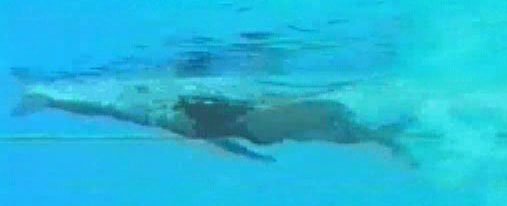 |
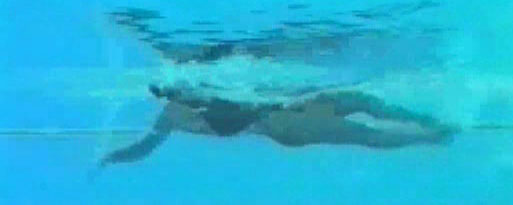 |
| 3 | 4 |
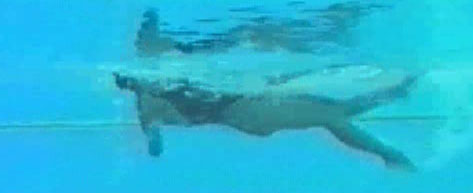 |
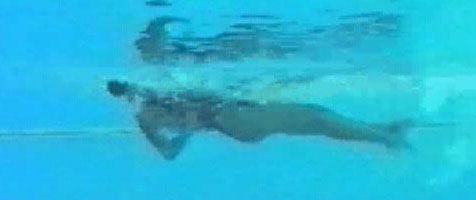 |
| 5 | 6 |
 |
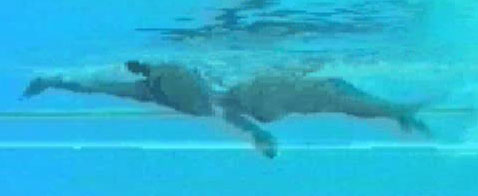 |
Backstroke Starts (Video Left)
Backstroke is the only stroke where we start in the water. Traditionally, the swimmer enters the water and grabs a bar on the starting blocks to pull themselves out of the water as much as possible. It's tempting to hunch over your legs when you do this, but that should be avoided. Keep your back straight, with your head in a neutral position.
When the buzzer goes the swimmer should develop power from their legs before releasing the bar, otherwise gravity takes over and you fall back into the water. By developing power before release you can generate sufficient force to go over the water, raising your hips above your head to effect a shallow back dive into the water.
The development of backstroke starting ledges has aided that, but it still needs practice to raise teh hips above your head to get a propper start.